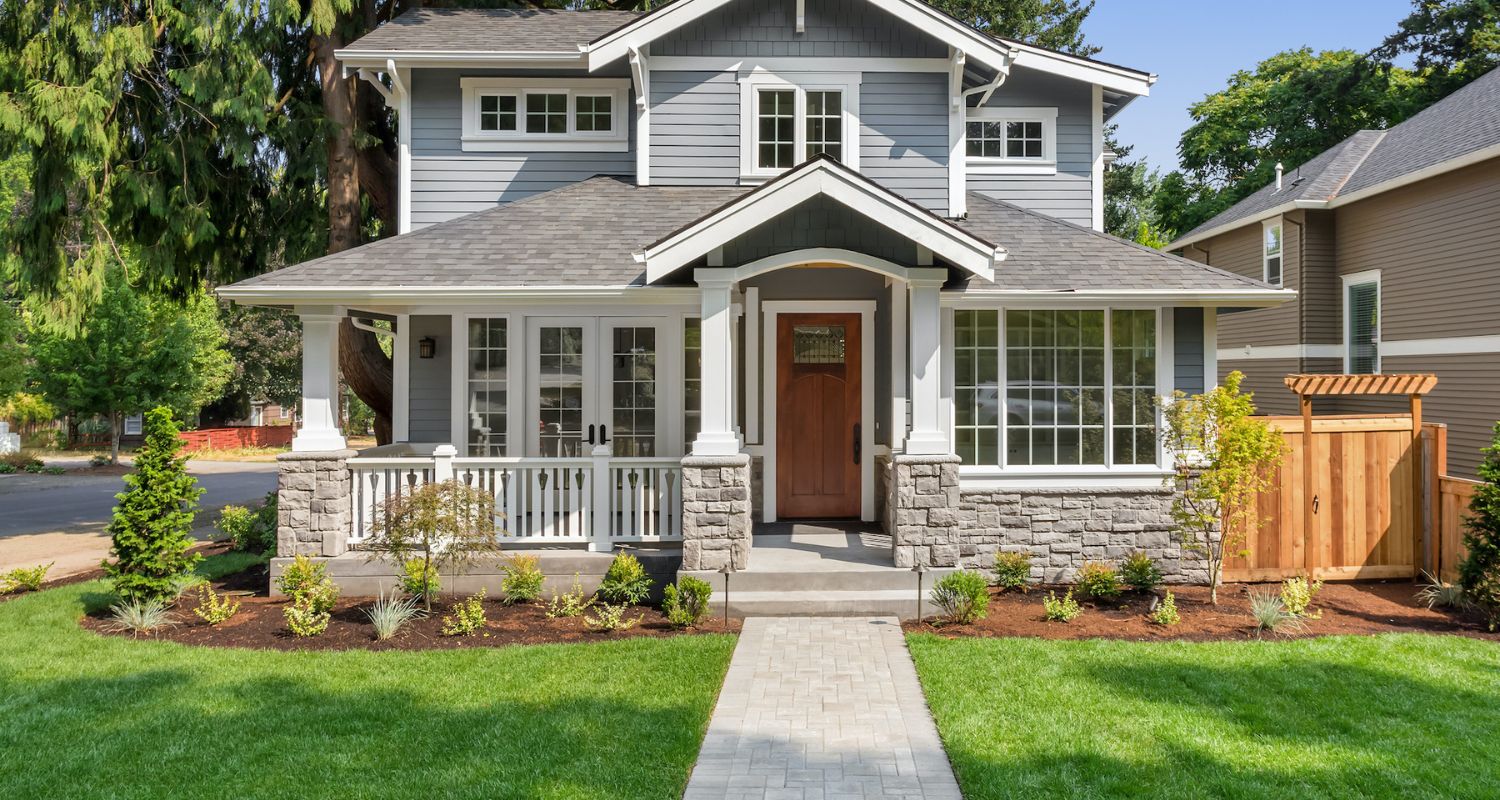
Buying a new construction home can be intimidating. While the builder will have options to choose from, you still have to decide on a lot: Choose a floor plan, decide on upgrades, find financing, and make decisions that you may not expect to make. If decisions aren’t your thing, you might be able to buy a new construction home that is already built and ready for you to move in. To get you all the tips for buying a new construction home, we did the research and got insights from Daniel Real, a top agent in Modesto, California, so you can walk through the process with the information you need to help it move as smoothly as possible. As with any real estate transaction, finding an agent who specializes in the type of home you’re looking for is key to success. When you begin your search for an agent, focus on those who routinely work with new construction homes. Even though you may have the option to buy a new construction home directly from the builder without the help of an agent, it’s important to consider the benefits that you’ll receive when you work with a buyer’s agent. Some of these include: HomeLight’s Agent Match Tool will match you with three qualified agents in your area in just two minutes. From there, you can connect with agents and decide who will be the best fit. All mortgage lenders are not the same. The builder may have a preferred lender, and that’s a good place to start — but it’s important to get preapproved with more than one lender to see who is offering the best terms for your particular circumstances. In Real’s experience “you should always shop around and get a different opinion, but if the builder is willing to give you a credit to buy down your rate and can get you better terms, I would lean on the credit from the builder.” Essentially, he says “trust, but verify and get a secondary opinion just in case.” Preapproval can take as little as one business day once you’ve submitted all of your documentation. Once you’re preapproved, you can compare each lender’s rates, terms, and closing costs. The mortgage company will pull your credit score, which could lower it temporarily, but depending on the credit-scoring model the lender uses, multiple credit checks within a short time frame may only be counted as one inquiry. Be sure to do your research on prospective builders. Look at their previous developments and find reviews about the neighborhoods and the building process itself. You can also do some general Google searches to see if you can uncover any lawsuits or bigger issues that could affect the work they do on their homes. Some things to look for include: Once you have narrowed down your builder and neighborhood options, do some digging into what your potential neighborhood has to offer. If the neighborhood is brand new and still being developed, look into what amenities you will have access to — a pool, parks, walking trails — and take a drive through the area to see what is nearby. Walk through the grocery store, stop at a coffee shop, and check out the nightlife (or daylife). If the neighborhood is already well established, get in there! Take a walk, take your kids to the park, chat with potential neighbors, and drive to your work from the area to see what the commute time will be. You can also use social media to dig even further into what neighborhood life is like. Check to see if the neighborhood is on Nextdoor or if there’s a Facebook page — though you may not be able to join either until you actually live in the neighborhood. Another aspect to look into is the neighborhood’s homeowners association (HOA). The HOA may have a website that you can refer to, or you can contact the HOA directly, to find out what the monthly fees are. Be sure to also take a look at the covenants, conditions, and restrictions (CC&Rs) to see what is allowed and what isn’t. Some HOAs are stricter than others, so you want to be sure you know what you’re getting into and what advantages they offer you as a potential homeowner. In any given development, there are different lots to choose from. When it’s time to choose yours, pay close attention to: This is where the process starts to get exciting! When it’s time to choose a floor plan, here are a few things to consider: Often builders will offer standard floor plans with customization options or you can work with them to design a custom plan. When you ultimately choose a builder, a neighborhood, and are getting ready to sign a contract, be sure to read the fine print in any documents from your builder. Doing this will ensure you know what is included and what’s not. Pay close attention to the details such as appliance packages, lighting, and landscaping. This is where your agent can come in handy — having someone on your team who understands these contracts will be your best bet for getting a great deal on your dream home. Even if you’re working with a builder who seems to be firm in their plans and prices, it’s still possible to negotiate and ensure you’re getting the best deal for you. Some portions of the build you might be able to negotiate include: This is especially true if you see that the market is slowing in your area or if the builder begins offering incentives to work with them. When it’s time to negotiate, Real suggests negotiating on upgrades or credits for interest rate reduction rather than the actual price of the home. Most builders will not be willing to budge on the final price of the home as this might set a precedent for future home prices in their development. Some upgrades may look nice, but might not increase the home’s value. When you’re choosing more expensive upgrades and features, it’s important to work with your agent to decide which features will get you a higher return on your investment when (or if) you sell down the line. “The biggest expenses that people are going to have and the biggest bang for your buck are kitchens and backyards,” says Real. “If you can do upgrades in the kitchen, you’re always going to get a great return on your kitchen.” The new construction process isn’t as cut and dried as moving into an existing home. Unforeseen circumstances such as weather, natural disasters, and supply shortages can impact even the best builders. If you need to be out of your previous home before you’re able to move into your newly constructed home, make sure you have a backup plan in place. You can apply for a short-term rental, stay with family or friends, or even book a hotel if you just need a few days. Make sure you also know your options for storing your things in the event you can’t move in right away. If the builder has leftover paint, carpet swatches, trim pieces, shower tiles, or flooring, they may be able to leave some behind so you can use them for repairs and touch ups later on. When you toured the model home, you probably fell in love with the shiny new features and impeccable decoration — maybe you even imagined yourself living in a home just like that one. But keep in mind that model homes are usually decked out with all of the upgrades and staged to perfection, and not every upgrade in the model home is going to be worth the extra money you spend on it. Your home may look and feel different, and that’s ok! A home inspection is always a good idea, even for a new construction home. Even the best builders make mistakes and your home can end up having some issues that you’ll want to have addressed before closing. You will have to pay for inspection, but that’s really the only downside. Some common issues such as incorrectly applied siding, cracks in the drywall, or humidity inside the home can be identified during the inspection, and you (with the help of your agent) can address these with the builder. One of the cool things about buying a new construction home is that everything is brand new and much of it is under warranty. Make sure you keep all warranty documents, including implied warranties, express warranties, and manufacturer’s warranties to make sure you’re prepared in case something breaks or is defective. Buying a new construction home comes with many decisions. It can be trickier than purchasing an existing home because in many cases, you won’t actually see it until after it’s built. However, it also means you’ll be living in a brand-new home that you can make entirely your own. Working with a buyer’s agent and builder you trust will help to ensure the process goes smoothly and you are happy with the end result.1. Find a buyer’s agent who works with new construction
2. Shop around for a mortgage lender
3. Research the builder
4. Research the neighborhood
5. Choose your lot — and be picky
6. Choose your floor plan wisely
7. Read the fine print
8. Negotiate everything you can
The biggest expenses that people are going to have and the biggest bang for your buck are kitchens and backyards. If you can do upgrades in the kitchen, you’re always going to get a great return on your kitchen.
9. Choose upgrades that increase the home’s value
10. Expect delays and plan accordingly
11. Ask for leftover materials to keep on hand
12. Manage your expectations
13. Get a home inspection
14. Keep all warranty documents
Buying new construction can be difficult — but worth it



